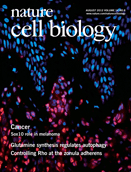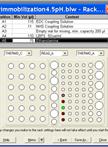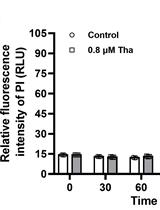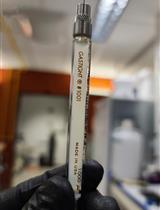- EN - English
- CN - 中文
Phosphoinositides Coated Beads Binding Assay
磷酸肌醇包衣颗粒结合试验
发布: 2014年02月05日第4卷第3期 DOI: 10.21769/BioProtoc.1039 浏览次数: 12725
Abstract
The PIs coated beads assay or “PIP-Beads” developed by Echelon Biosciences (Salt Lake City, USA) is a quick assay to recognize which PIs are able to bind to a given protein domain, in a quantitative way. It is much faster and cheaper than liposomes and more reproducible than PIP-strip assays. The “PIP-Beads” assay is a biochemical assay that basically involves an incubation of a purified protein or protein domain with the appropriate PI-coated set of beads. After washing, drying and resuspending the samples, they can be easily analyzed by SDS-PAGE separation. Phosphoinositides (PIs) have been characterized as important determinants of cell membrane domains, such as the apical and basolateral domains in epithelial polarized cells (Martin-Belmonte and Mostov, 2007), controlling membrane trafficking (Szentpetery et al., 2010) or determining the presynaptic or postsynaptic terminal in neurons, among other functions (Di Paolo and De Camilli, 2006). These phosphoinositides enriched membranes bring the proteomic machinery together, confers to these membrane their different identities and functions. This protein-PIs interaction in many cases involves direct binding of specific protein membrane domains with certain PIs. Some of these domains are characterized such as PH domains from phospholipase-C- or synaptotagmin-like C2 domains (Galvez-Santisteban et al., 2012), while some of them are not. To determine which PI is binding to a given protein domain, it is important to have a quick and efficient assay. The liposome binding assays are very good to establish the kinetic properties of binding, but they are expensive and permit only to test a few PIs per experiment. On the other hand, PIP-strip (phosphatidil-inositol-phosphate) based analysis is easy and fast, however the PIs are presented in a flat surface and the reproducibility is sometimes limited.
Materials and Reagents
- PIP-Beads (Echelon) with the corresponding phosphoinositide of interest. Echelon provides a wide range of PI and other phospholipid coated beads on demand, including a sample pack that has a wide range of PIP-coated beads (P-B00S).
- 2 µg of purified GST-tagged protein per tube of beads and GST alone for control
The protein can be produced and purified by standard methods of GST-tagged protein purification by glutathione-sepharose beads. For the present assay, it is recommended to elute the protein from glutathione-sepharose beads and quantify it before use. Moreover, it is important to use high concentrations of protein, in order to use the smallest possible volume. - HEPES
- Lgepal CA630
- SDS
- Glycerol
- Tris-HCl
- β-mercaptoethanol
- Bromophenol blue
- Wash/binding buffer (see Recipes)
- 2x Reducing Laemmli Sample Buffer (see Recipes)
Equipment
- Refrigerated centrifuge
- Oscillatory or gyratory shaker
- Aspiration pump
- Needles 0.7 x 30 mm
- 1.5 ml Tubes
Procedure
文章信息
版权信息
© 2014 The Authors; exclusive licensee Bio-protocol LLC.
如何引用
Gálvez-Santisteban, M., Rodriguez-Fraticelli, A. E. and Martin-Belmonte, F. (2014). Phosphoinositides Coated Beads Binding Assay. Bio-protocol 4(3): e1039. DOI: 10.21769/BioProtoc.1039.
分类
生物化学 > 脂质 > 脂质-蛋白互作
生物化学 > 蛋白质 > 相互作用 > 蛋白质-脂质相互作用
您对这篇实验方法有问题吗?
在此处发布您的问题,我们将邀请本文作者来回答。同时,我们会将您的问题发布到Bio-protocol Exchange,以便寻求社区成员的帮助。
Share
Bluesky
X
Copy link












